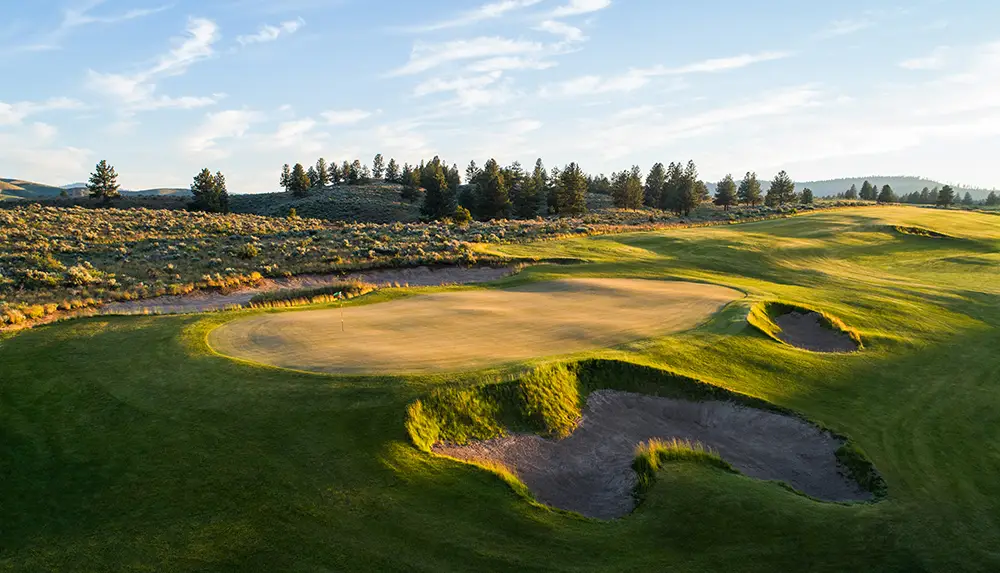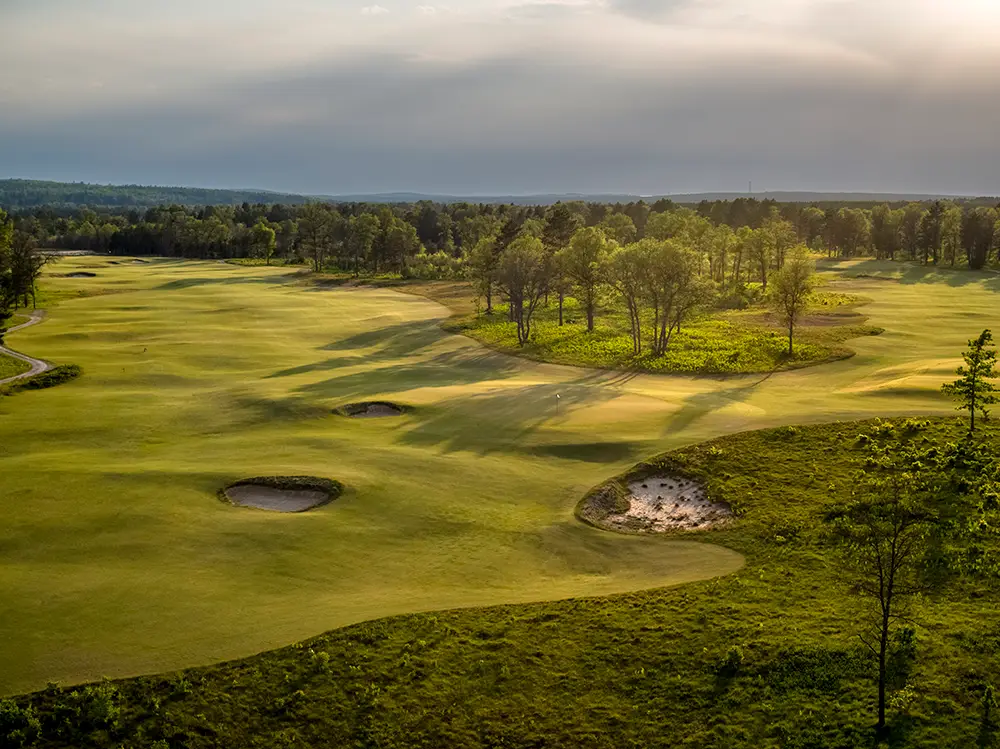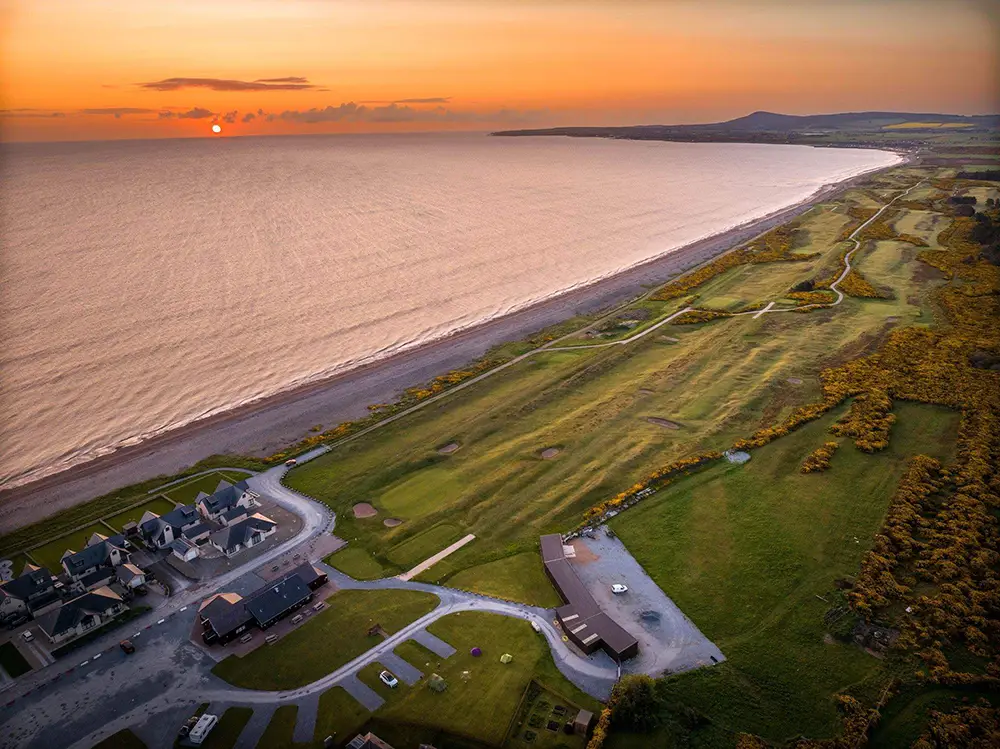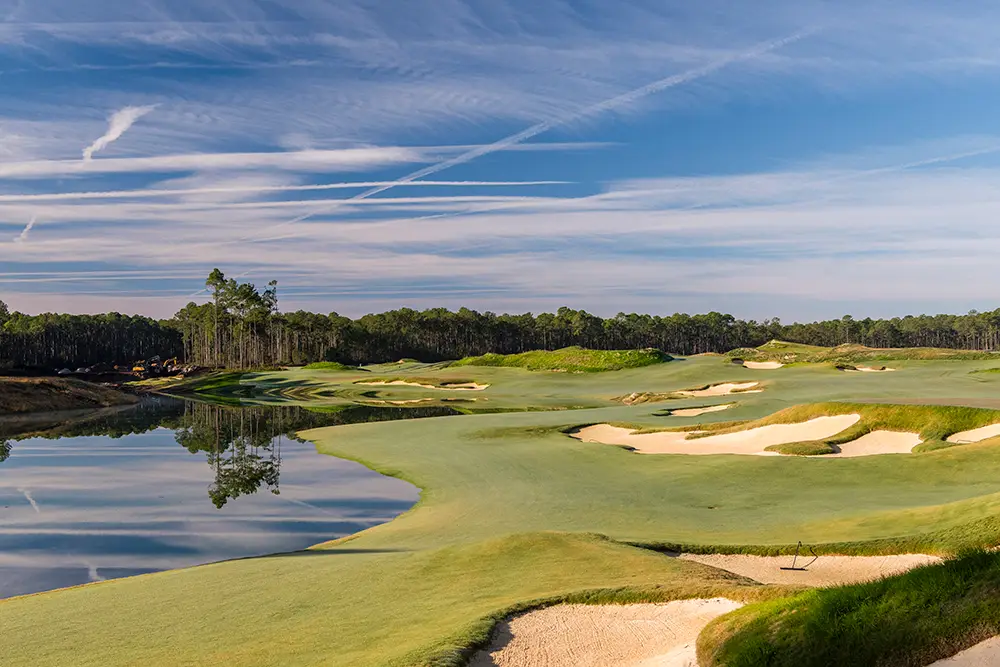It’s not like they were the only thing golfers could talk about, but from June 2016 when Michigan’s The Loop opened to July 2017 when Silvies Valley Ranch in Oregon welcomed its first guests, reversible courses certainly enjoyed their moment in the spotlight.
Inspired by the reverse, or “left-hand,” routing on the Old Course at St. Andrews, the Red/Black courses at the Tom Doak-designed Loop at Forest Dunes and Dan Hixson’s Craddock/Hankins 18s at Silvies (36 holes/27 greens/16 fairways) revived a type of golf very few had any experience of, but which aroused a great deal of curiosity.

They spurred a handful of similar designs including the 9/18-hole Sailfish Sands in Florida; 9/18-hole Bobby Jones Golf Course in Georgia; the 6/12-hole Wilson Sporting Club in Arkansas; and two 9/18s in Europe designed by Frank Pont—Links Valley in Pont’s home country of The Netherlands and Patting-Hochriesblick in Germany.
But though they attracted their share of attention, and though interest in the Loop and Silvies remains high, the reaction was for the most part short-lived and the rapid construction of reversible courses that many had anticipated didn’t happen, despite their perceived benefits.
Doak isn’t surprised. “Not at all,” he says. “It takes a certain kind of property, and certain kind of client. It’s also hard to make it work—you’re essentially signing up for 50 percent more work but probably won’t be paid any extra.”
The site for The Loop, Doak adds, was well-suited for a reversible course as there was little elevation change (an inviting downhill hole one way could be a tedious, uphill slog the other) and no chance of getting returning nines to the clubhouse. “That’s good,” he says, “because the more you can keep the routing on a line, the easier it is to lay out.”

It also helped that Doak didn’t feel any need to build big teeing areas or flashy bunkers. “Big tees can get in the way of approach shots when playing the other way,” he says. “And the more flashy you make the bunkers from one angle the less likely you are to see them from the opposite side.”
The bottom line, Doak concludes, is that, for reversible courses to work, the architect must favor function over form.
Given the unlikelihood of combining the perfect site with a willing owner, it’s perhaps a little surprising reversible courses are in the news again with the completion or announcement of three new venues. None registered anything like the same intrigue as their predecessors, but their reappearance was notable if only because it confirmed the concept is still alive.
That all three are private or semi-private is surely what’s preventing them from stimulating the level of interest the Loop did, not their quality or the cachet of the architects that designed them.

Dave Zinkand, a former design associate and shaper for Bill Coore and Ben Crenshaw who set out on his own in 2008, is currently turning 37 acres of the old Lilac Nine at Medina Country Club in Ohio into a par-31 reversible layout. While he certainly understands the need for a very specific type of site to make reversible golf possible, Zinkand is a little surprised more hasn’t been built. “The reversible courses I’ve seen have been really interesting,” he says. “They provide a lot of variety and can ease maintenance issues as you divide wear from divots between two approach-shot areas, not one.
Zinkand suggested going reversible to the property’s owner, Mortgage company CEO Bill Cosgrove. “He loved the idea,” says Zinkand. “Golf developers tend to be comfortable with convention. They’re usually not the type to take risks. But the terrain here is right for it, so I don’t think it’s that risky. And it’s really two courses for the price of one.”
Crossroads at Palmetto Bluff in Bluffton, S.C., was designed by Rob Collins and Tad King of Sweetens Cove and Landmand fame and opened in January. Set on 54 acres with no formal tee boxes—just flat areas from where the winner of the previous hole can choose to start the next hole—it is so full of options and alternative routings members have taken a while to sample them all. Of the 11 greens, some are double, some triple, and some played in only one direction.
Superintendent Adam Deiwert, who moved to Crossroads from Trinity Forest in Dallas, says each green has two hole locations rotated frequently, and that the course has enough cups for a typical 27-hole property. “We also have 18 flag sticks on the course each day,” he adds.

Collins, whose fast-growing portfolio now includes a public 18-holer on 580 acres of heaving, big-featured land; a private 18-holer on a dead flat, 130-acre cotton field with no features; a 12-hole course; public, resort, and municipal 9-holers; and a 9-hole reversible; says the course took less than seven months to build and saw a lot of changes throughout the process. “Tad and I were constantly massaging it,” he adds. “The owners just let us loose, and we wanted to create something that no one would ever tire of. No matter what we build and where, the goal is always to build something interesting and fun.”
The third recent reversible is being built in Scotland by the firm of Clayton, DeVries & Pont (CDP) which was hired by cryptocurrency-funded organization LinksDAO to renovate the 117-year-old, Ben Sayers-designed Spey Bay Golf Course on the Moray coast.
Turning it into a reversible course was CDP’s idea and LinksDAO was onboard. “The ground is ideally suited for it,” says Clayton. “It’s perfectly rumpled with nothing precluding play from either end of the holes. So, they work going both ways.”
Though there’s no plan to offer tee-times and visitor rates, membership of LinksDAO and its Links Golf Club is available to anyone that purchases its Non-Fungible Token (NFT) and, because the club enables community governance, it is, essentially, public.
Whatever its status though, Clayton is just thrilled to be involved. “It’s in Scotland for one,” he says. “But the concept has always seemed fascinating to me. With the right piece of land, every architect would welcome the opportunity to design a reversible course.”
Have you played a reversible golf course? Tell us about the experience in the comment section.






